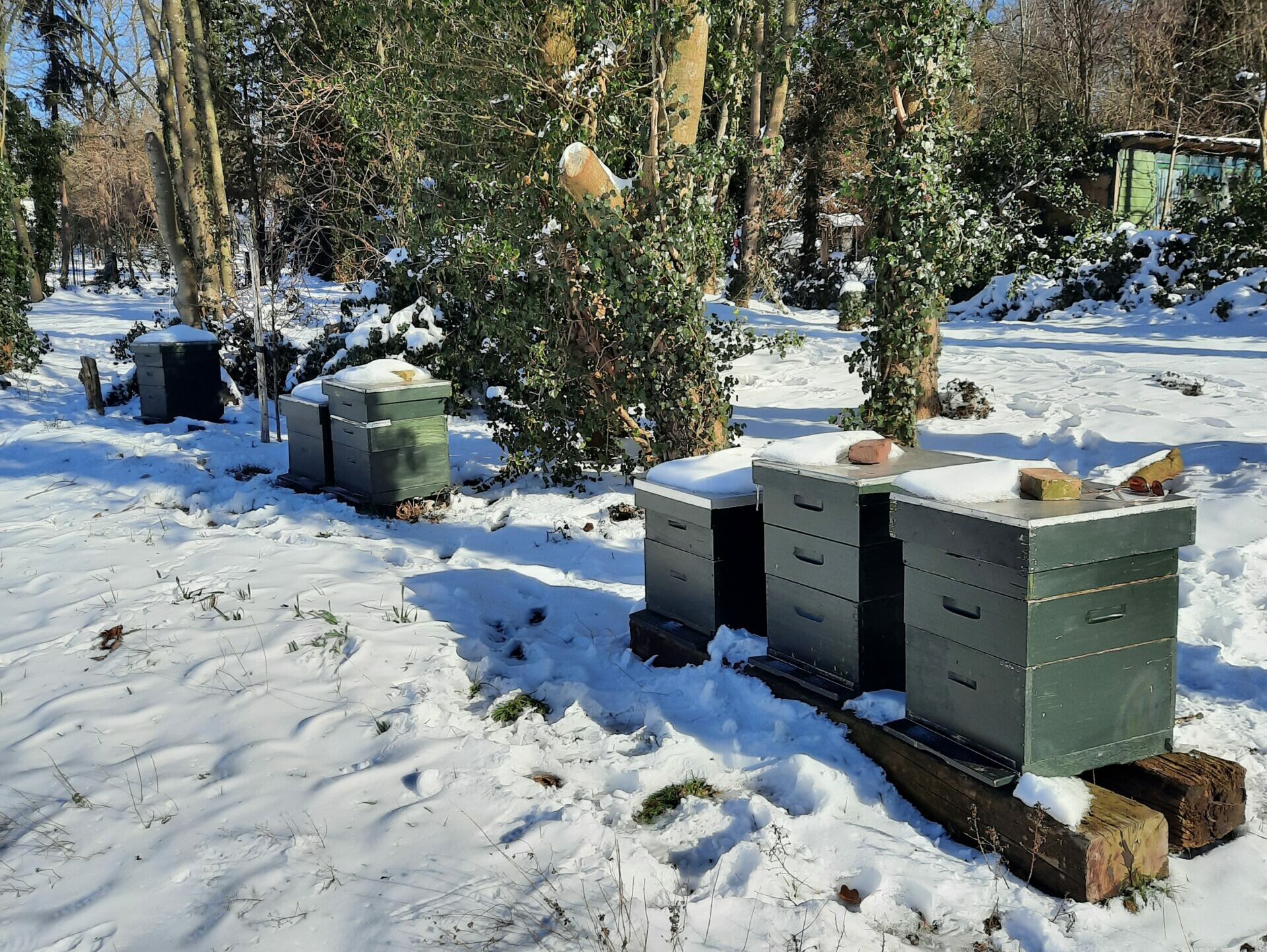The mild winter of 2021-22 induced the colonies towards an early brood nest formation. However, in March and April the weather was cold and dry. This hampered colony development considerably. Consequently, the honey crop on the spring fruit trees was negligible. Still, it helped colony build-up.
In the late summer and early autumn, there was a severe drought once again. As a result, the heather honey harvest has largely failed. The autumn rains came just too late.
We had sown lupine on our field this year. More information on this crop can be found on the website of the ‘Golden Bean’ (in Dutch). There were many insects to be seen on the flowers, but interestingly enough few honey bees.
The autumn remained warm for a very long time, so the bees continued to breed until very late in the season. Fortunately, there is a lot of ivy around our field, so that pollen supply was not endangered.
However, the Varroa population build-up also continued for a long time, so that Varroa numbers in the colonies are still high at this moment, at the beginning of December. That means I will have to treat most colonies with oxalic acid, unfortunately. The Varroa population is determined by continuous counting of natural mite drop on the bottom board over a period of at least three months. A one-off count, as is often prescribed, is not sufficient, as the natural mite drop fluctuates strongly. By determining the mite drop over a longer period, a growth curve of the mite population can be constructed. The parameters that determine the shape of the curve give an indication of whether treatment is necessary or not.
The fertilisation of the purebred black queens at the Neeltje Jans mating station was disappointing. On average, only 60% of the young queens came back fertilised, but my result was even poorer than that… The first mating period had been called off: it was too cold and there were hardly any drones around. I had not prepared myself well for the second period, so that the selected breeder colony was not strong enough. This has negatively affected the quality of the young virgin queens. The fertilisation of the landrace queens on De Driest, on the other hand, was flawless: 100% fertilised. The difference could be that these virgin queens were not in small mating nuclei, but were obtained with the 2×9 method (see link).
As a result, the majority of the colonies now contain queens of the ‘landrace of the Wageningse Eng’. Only a few (fairly pure-bred) black queens remain.
